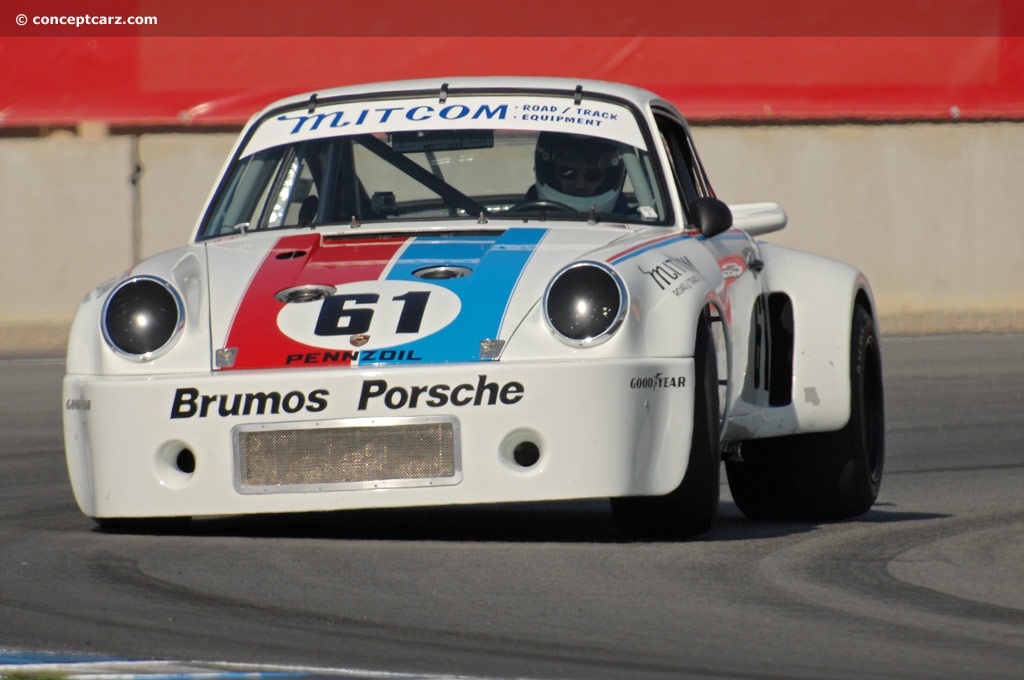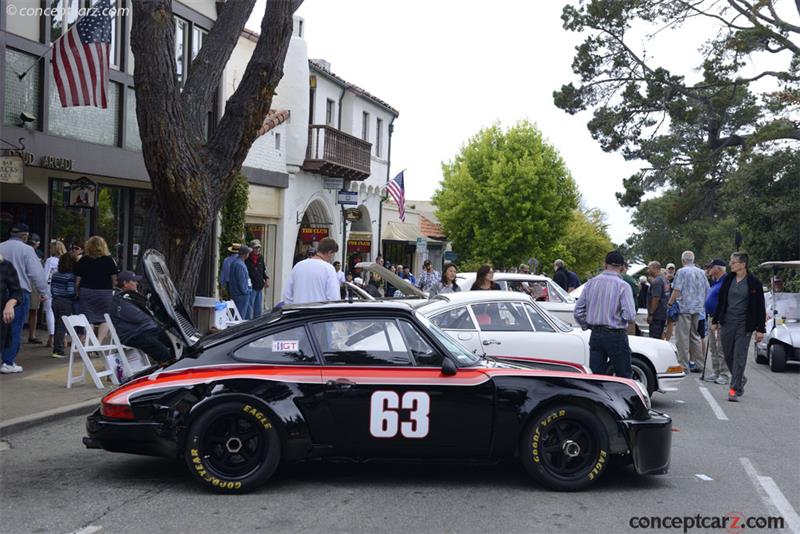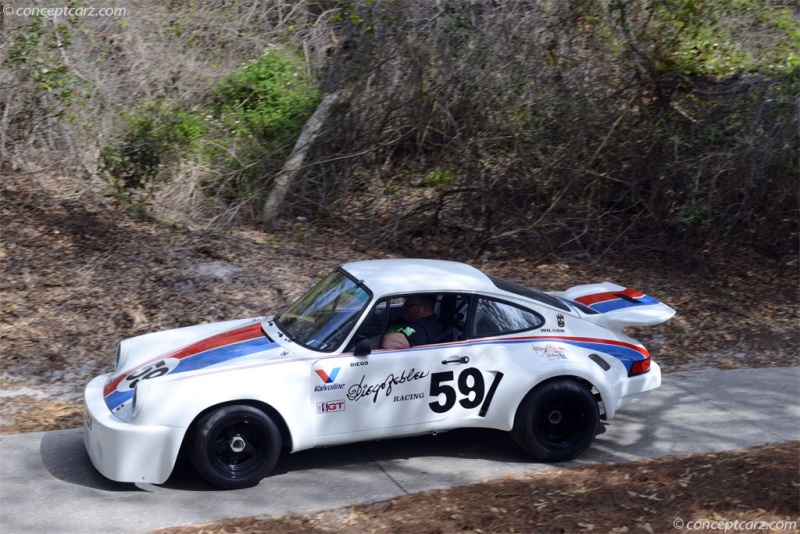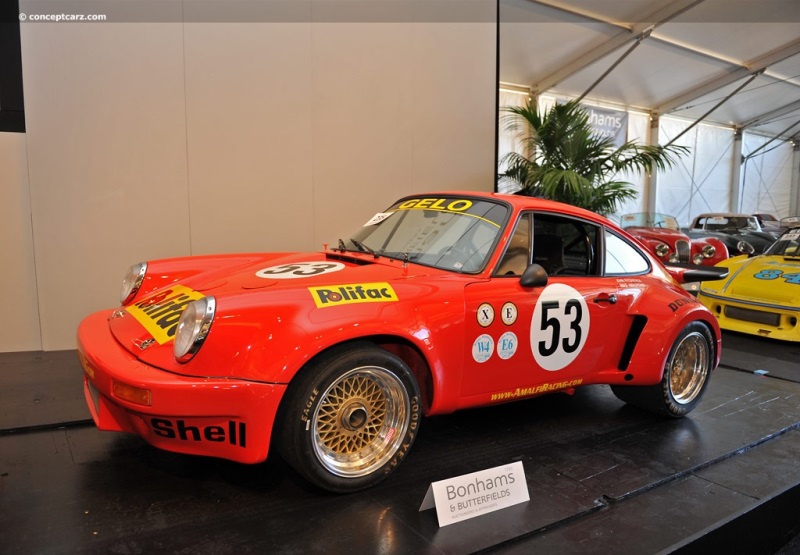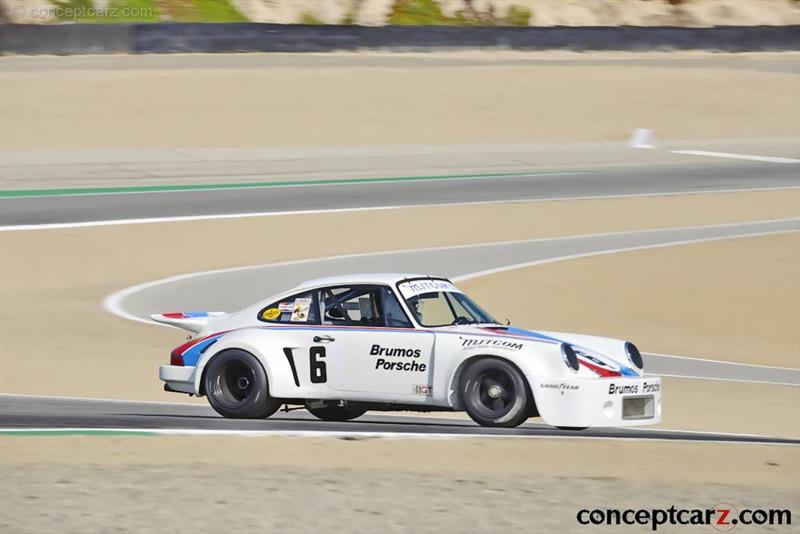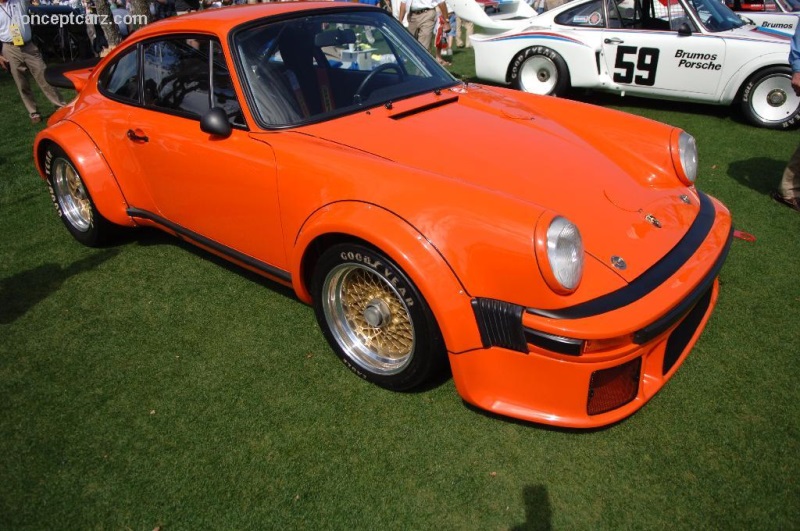1975 Porsche 934 RSR Navigation
The road that led Porsche to an outright victory at LeMans in international competition began in the 1950s with the class winning 550. Powered by the Type 547 dual-overhead-cam flat-four-cylinder engine, the well-engineered automobile proved more than capable of outpacing large-displacement competitors. The final evolution of the Carrera-based racing spyders were the RS 60 and RS 61 of the early 1960s. The Porsche competition flag in international GT competition was carried by the Type 356-based Abarth-Carreras. After a slight excursion down the Formula One road in 1962, Porsche returned its full attention to sports car racing.
Coupe
Chassis #: 9115609119Porsche's use of the competition four-cylinder engine ended in 1964 with the introduction of the 904 GTS Coupe, followed by the Type 906 (a.k.a. the Carrera 6). Further development resulted in the 910 (Carrera 10), 907, and 908. These cars continued to utilize lightweight construction, nimble characteristics, and quality construction that allowed them to punch above their weight. In 1969, the 908 nearly won Le Mans putting the international community on notice that Porsche was becoming a serious contender for outright victory. Even with the advanced warning, nothing could have prepared them for the 917. The five-liter prototype sports racer was the culmination of years of research and development, infused with the most modern concepts in automotive technology and design. Considered by many as the greatest racing car of all time, the factory Porsche 917K's were victorious at the 24 Hours of LeMans, the 12-Hour of Sebring, and the Daytona 24-Hour sports-car championship races among others.After dominating the European racing scene, Porsche turned its attention to the North American markets and the Can-Am Challenge. Further development brought forth the 917/10K entered by Penske Racing which culminated with George Follmer winning the 1972 season and ending McLaren's five-year winning streak. A stronger 5.4-liter engine, revised aerodynamics, and a longer wheelbase version was prepared for the 1973 season, known as the 917/30, which won all but two races during that year. The 917/30's biggest competition that season was from the Porsche 917/10K.New racing regulations, safety concerns, and the oil embargo brought an end to Porsche's dominance in the prototype era and the start of its factory-supported GT racing program based on the 911 platform. The new Carrera RSR 2.8 proved highly effective and successful in this venture, dominating the 1973 season and winning the Targa Florio outright. Porsche experimented the following season with an RSR 2.14 Turbo at the 24 Hours of LeMans where it finished 2nd overall. These successes reinforced Porsche's efforts on building 911-based racing cars to compete in the FIA World Championship. 
Coupe
Chassis #: 9115609120
Engine #: 6850166
View info and history
Auction entries : 2For the 1976 season, Porsche's Group 4 entry was the Type 934 and its Group 5 competition car was the Type 935. The Type 934 was made available to customers but the 935 was intended as a works team entry. Several of the 934s were later modified by customers to Group 5 specification, prompting Porsche to build a batch of 935s for the 1977 season.Group 4 racing regulations limited engine capacity based on minimum weight and mechanical components. The maximum capacity for naturally aspirated cars was four liters; cars equipped with turbochargers were limited to smaller displacements sizes. Porsche's turbocharged 934 was limited to three-liters and a minimum weight of 1,120 kg. In stock form, the 911 Turbo required only minor modifications to prepare it for competition and to comply with racing regulations. The work required a slight weight reduction and reinforcement of the suspension and brakes. The flat-six engine received stronger internal components to help it cope with the rigors of racing, including the adaption of an intercooler which was not standard on a production road car. In the front of the car, engineers added a pair of water radiators to help cool the engine and the intake gases. Regulations were strict on body modifications, resulting in Porsche using the production rear-wing instead of placing a conventional intercooler in that location. The bodies did receive flared wheel arches to envelope the wider front and rear tires.The factory-built Type 934 maintained close ties with its road car counterpart and retained much of the classic 911 form, distinguishable by the riveted GRP fender flares, prominent front air dam, and three-piece BBS wheels. Equipped with a full aluminum roll cage, rear coil-spring suspension, 917 brakes, and a turbocharged, three-liter flat-six engine, the 934 could sprint from zero-to-100 mph in about 12 seconds and had a top speed approaching 190 mph. 
Coupe
Chassis #: 005 0005The 31 examples built were sold to private racing teams and campaigned with great success in a variety of international and regional series. They won the 1976 European GT Championship and the 1976 and 1977 SCCA Trans Am title. Initially declined acceptance by IMSA's John Bishop for inclusion in the Camel GT series in 1975, it was finally allowed approved for 1977.The final batch of 10 Type 934s were built in 1977 and came with upgrades such as even wider wheel arches, a wide 935-style rear wing, and mechanical fuel injection. These final cars are called the 934/5 or 934 1/2.
by Daniel Vaughan | Jul 2020
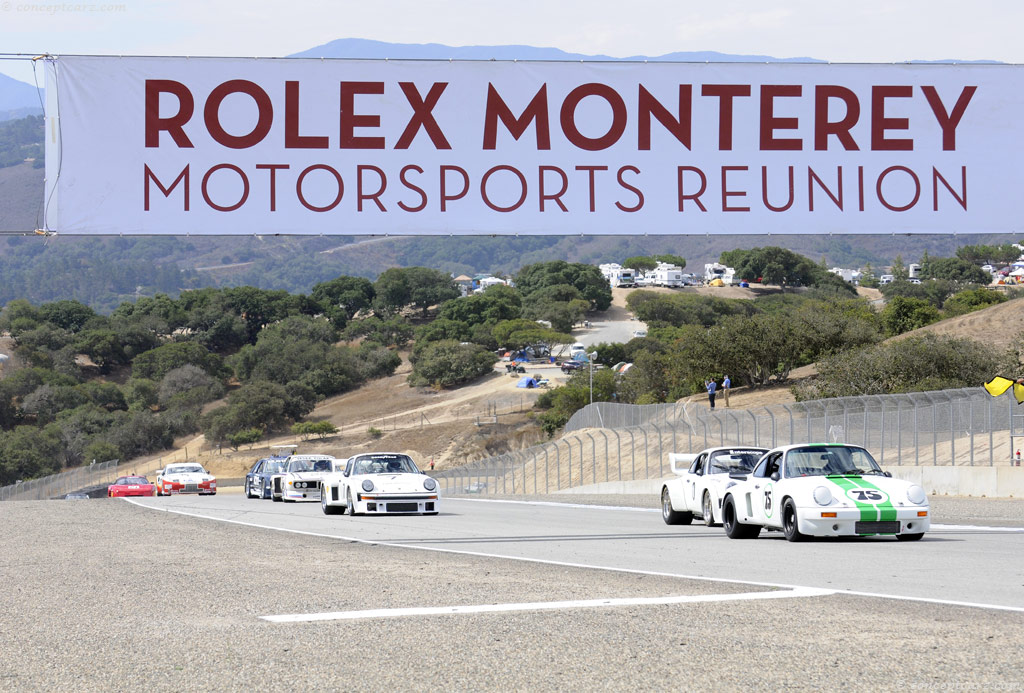
Coupe
Chassis #: 9115609119
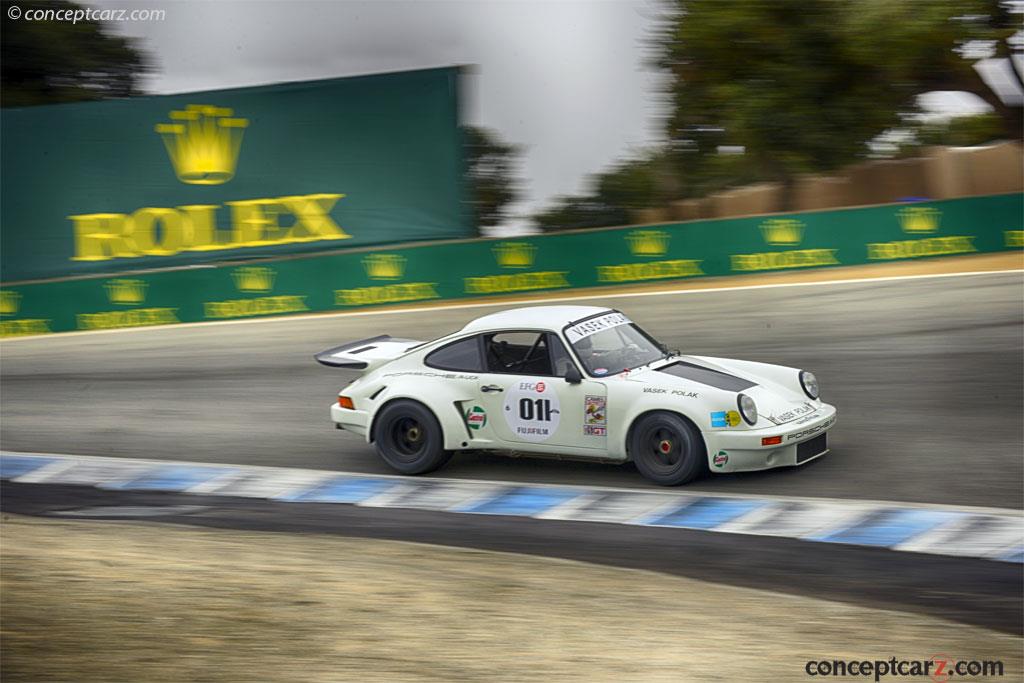
Coupe
Chassis #: 9115609120
Engine #: 6850166
View info and history
Auction entries : 2
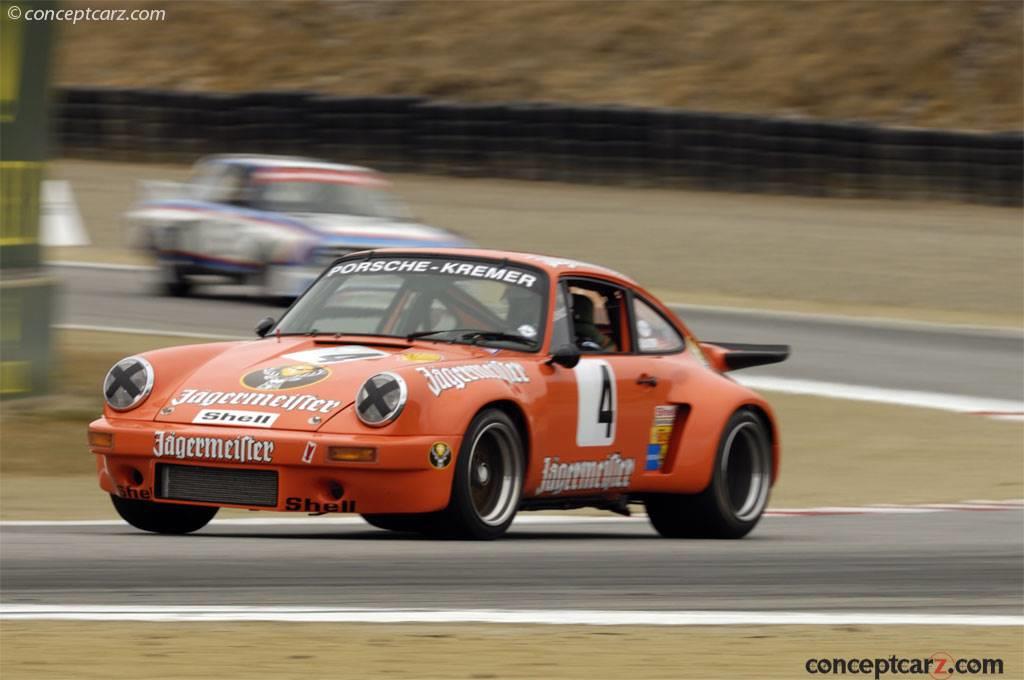
Coupe
Chassis #: 005 0005
by Daniel Vaughan | Jul 2020
The Carrera RSR solidified the earlier successes of 911s in European rallies and major road races. The unprecedented success of the Porsche 917 during 1969-1972 limited the 911's racing sponsorship primarily in privateer hands. However, with the decline in interest in prototype racing and the 1974 demise of the CanAm series, suddenly production based cars such as the RSR were elevated to headline status and the factory went out of its way to assist customers. In 1973 Porsche quickly switched focus to the 3-liter European GT Championship (FIA Group 4). Porsche created the road legal Carrera RS by modifying the std 911 with a beefed up, lightweight engine, 917 brakes, adjustable shocks, wide body work and wheels, plus the signature whale tail spoiler. The RSR, strictly a race-car, had still a more powerful engine, coil over shocks, and even wider bodywork and wheels. 109 RSRs were built in 1974.
Coupe
Chassis #: 9115609119Success was immediate. The RSR dominated the world GT scene from 1973 to 1975. Penske/Donahue selected the 1973 RS for the first IROC series in 1973. RSRs placed 5th thru 10th overall and first in GT class at LeMans in 1976.Successful RSR competitors include: Atkin, Busby, Donahue, Dyer, Elford, Follmer, Gregg, Haywood, Holbert, Minter, Kemer, Earle, Robinson, Joest, Loos, Faure, Fitzpatrick, Hagestad.
by Daniel Vaughan | Feb 2008

Coupe
Chassis #: 9115609119
by Daniel Vaughan | Feb 2008
Related Reading : Porsche 934 History
The Porsche 934 was a specially prepared racing version of the Porsche 911 Turbo built to satisfy the FIA Group 4 rules and to continue the marques success in that class. Homologation requirements stated at least 400 road-going cars were to be built within a two year period. The dimensions of the road and race cars were to be equal and modifications throughout were to be limited, except for safety.....
Continue Reading >>
Continue Reading >>
Related Reading : Porsche 934/935 History
In 1976, Porsche introduced a racing version of the Porsche 930911 Turbo which they dubbed, the 935. It was designed for FIA-Group 5 competition and was constructed in a similar fashion to the Porsche 934, which was used in Group 4 competition. The works team, with sponsorship by Martini, entered the 935 in the FIA World Championship for Makes with team drivers, Jacky Ickx and Jochen Mass in....
Continue Reading >>
Continue Reading >>
Related Reading : Porsche 934 History
One of the most successful shapes of all time, every young schoolboy can spot a Porsche 911 when one drives by. Porsche purists can wax poetic on the timeless lines of the series. And surely timeless is the right word. Introduced in 1964, even the very first 911 looks remarkably similar to todays iteration. The smooth, elegant contours, though, have occasionally taken on a distinctively sinister....
Continue Reading >>
Continue Reading >>
- 1975 Porsche 934 RSR Menu
- Article
- Image gallery
- Valuation
- Specifications
- Profiles
IROC VehiclesFIA Group 4 Vehicles
Similarly Sized Vehicles
Porsche
Similar Vehicles
Similar Automakers
Similarly Sized Vehicles
from 1975
1975 Porsche 934 RSR Vehicle Profiles
Recent Vehicle Additions
Related Automotive News
Brumos Collection Unveils 'Brumos: An American Racing Icon'
Brumos An American Racing Icon
By Sean Cridland
A Look Inside The Three Volumes
Volume I The Brundage Era chronicles the historical events that led to the creation and development of one of the worlds most legendary teamsWith a foreword...

Porsche Rennsport Reunion VI : Highlights: of man and machines
Stuttgart. The Porsche Rennsport Reunion VI at Laguna Seca (USA) has more than 60,000 fans of the brand from Stuttgart spellbound. At the four-day event in California, avid motor racing enthusiasts in legendary vehicles and unforgotten works...

Porsche Honors Hurley Haywood On 70Th Birthday
Endurance racing legend born May 4, 1948
Atlanta, Georgia. Porsche congratulates one of its most decorated ambassadors, Hurley Haywood, on a shared anniversary The five-time Rolex 24 Hours of Daytona winner turns 70 today, just a month before...
All-Star Cast of Cars, Drivers at Porsche Rennsport Reunion V
The Porsche highlights for a weekend full of highlights
Atlanta, Georgia. For the Porsche Rennsport Reunion V taking place at Mazda Raceway Laguna Seca this weekend, both the men and the machines they drove are expected to outdraw one...
RRDC VOTES IN 37 NEW MEMBERS FOR 2013
HILLIARD, Ohio (Nov. 7, 2013) - Thirty-seven race-car drivers and motorsports professionals have been voted into the Road Racing Drivers Club in 2013. The group includes 13 Regular Members from the open-wheel and sports-car racing ranks, 20 Associate...
